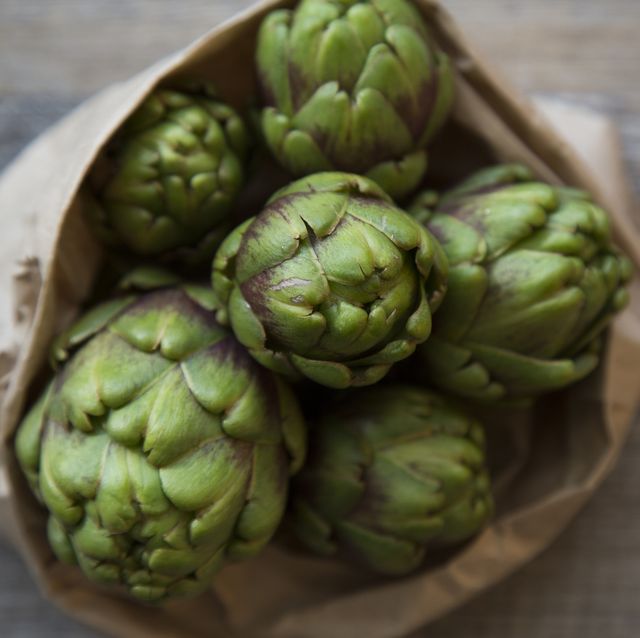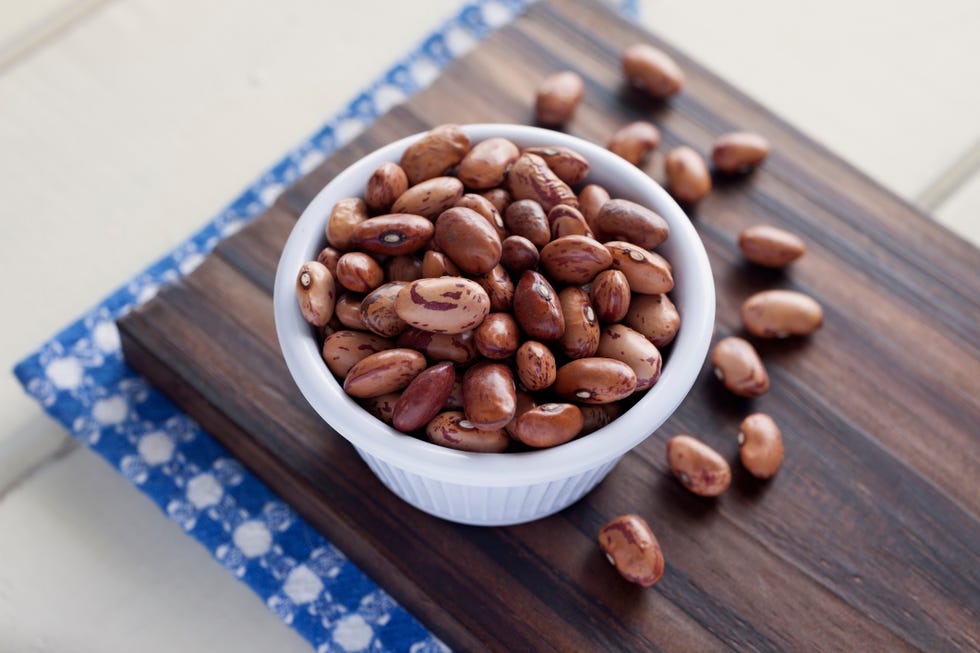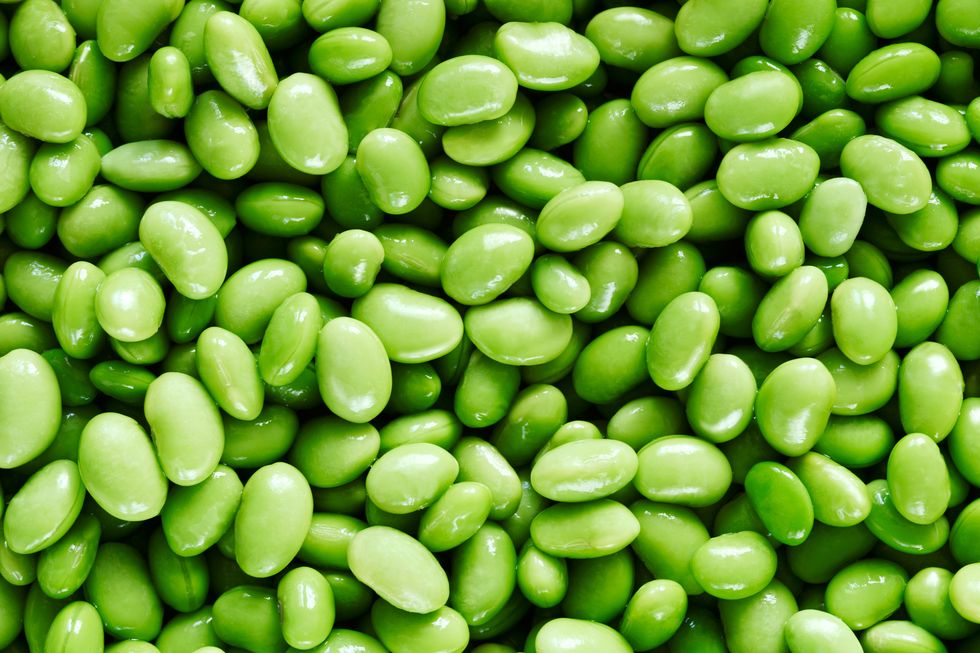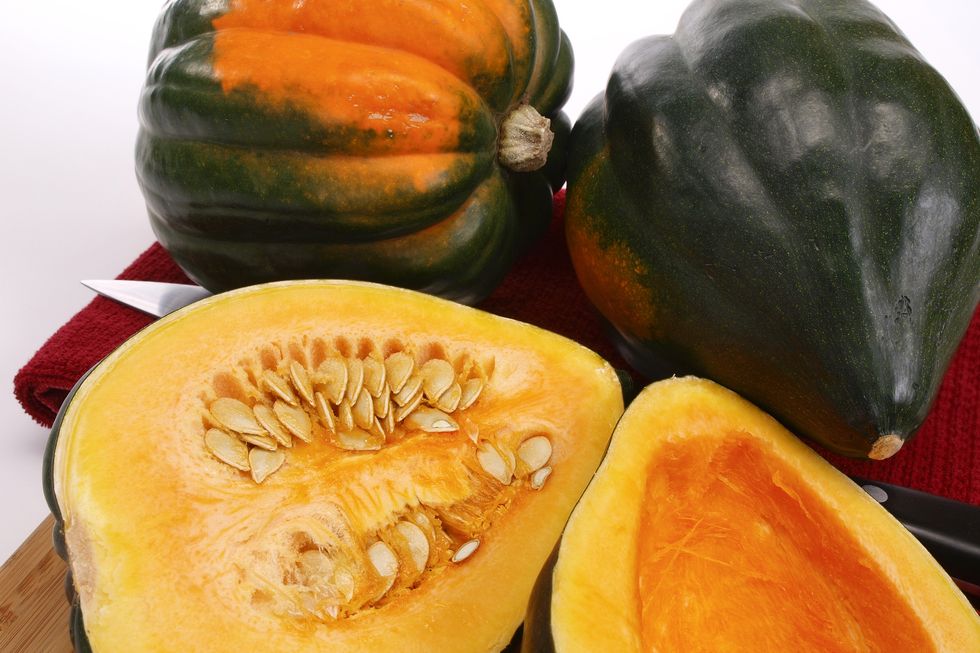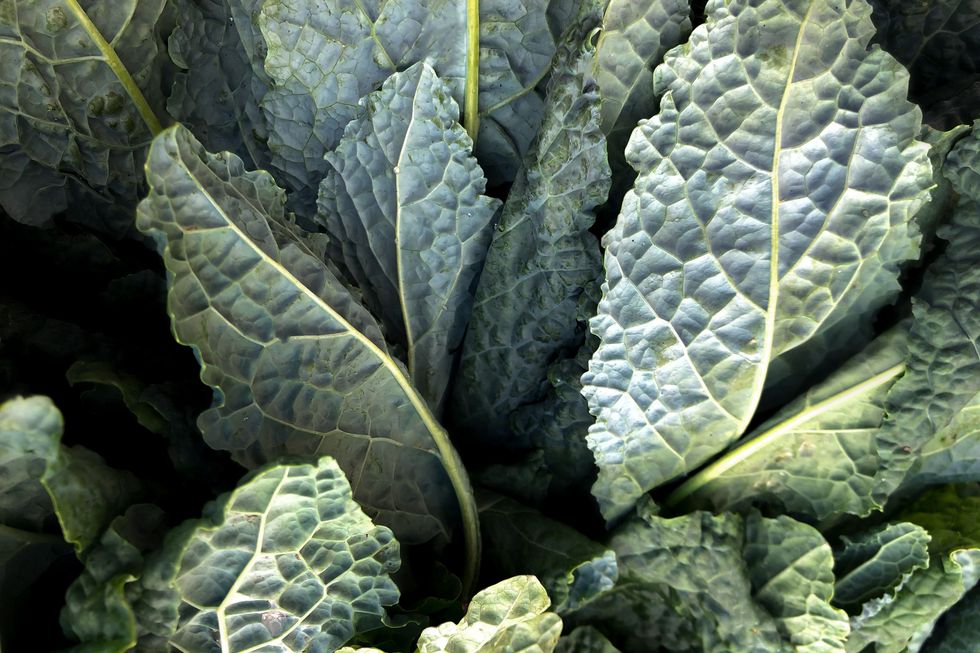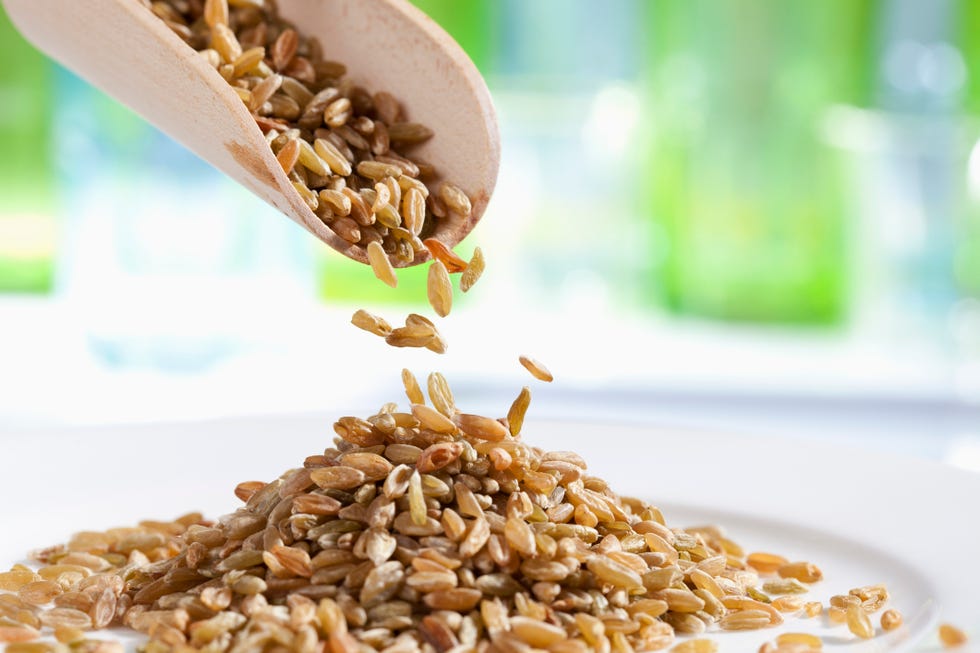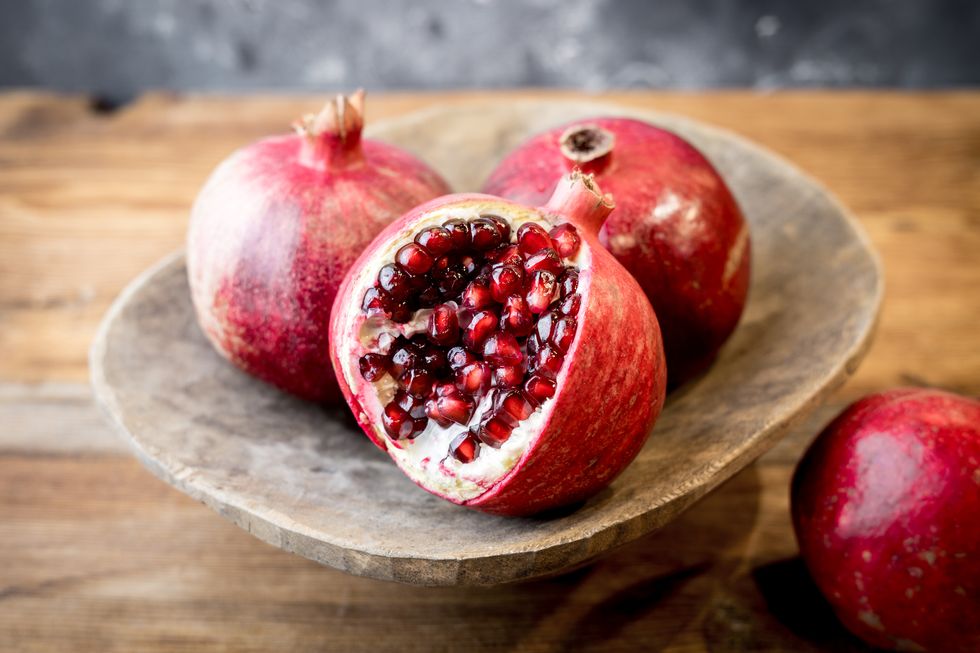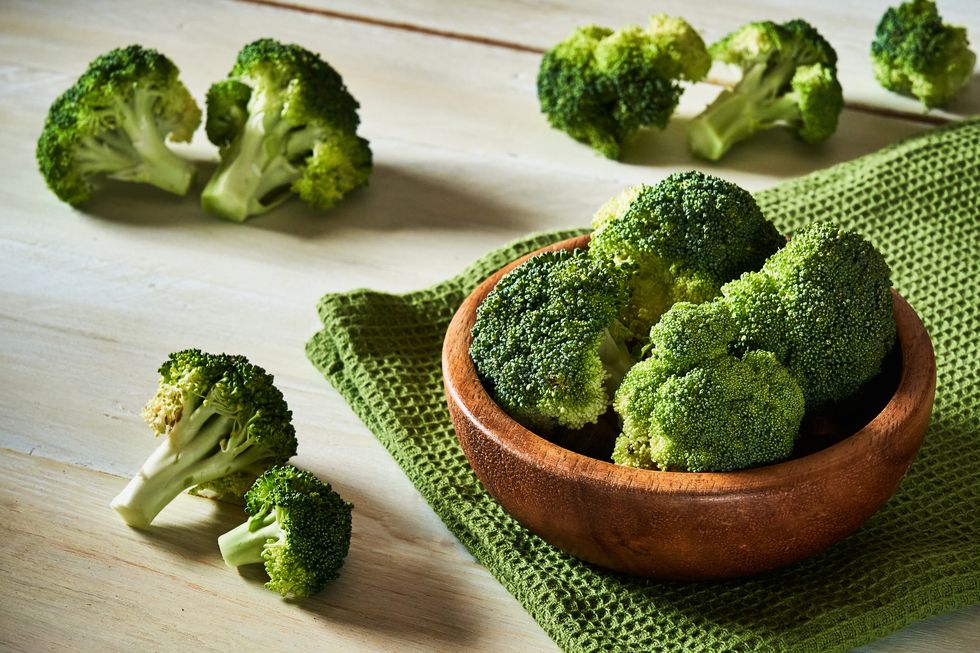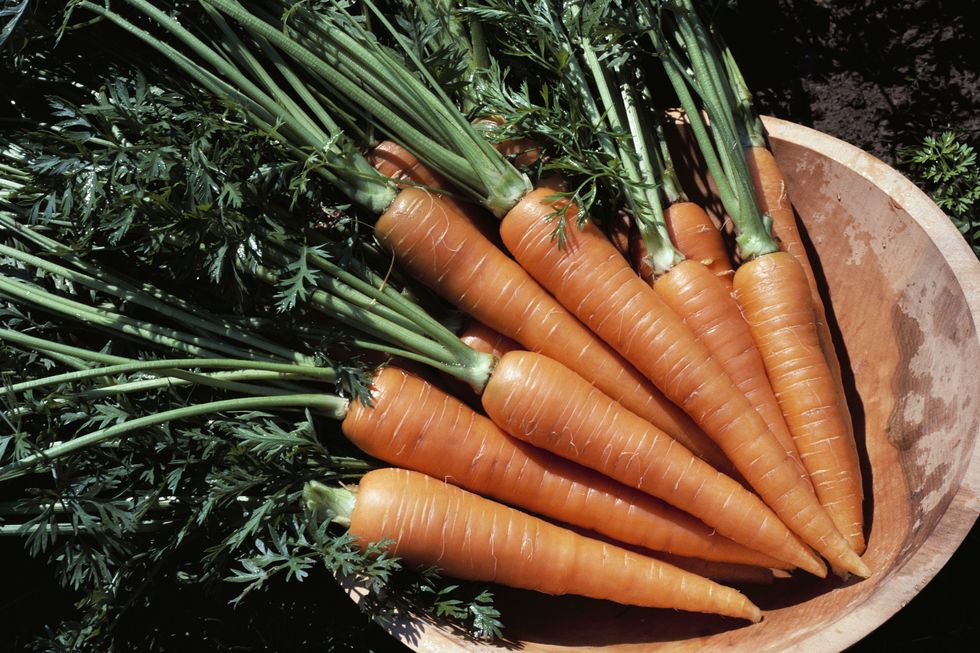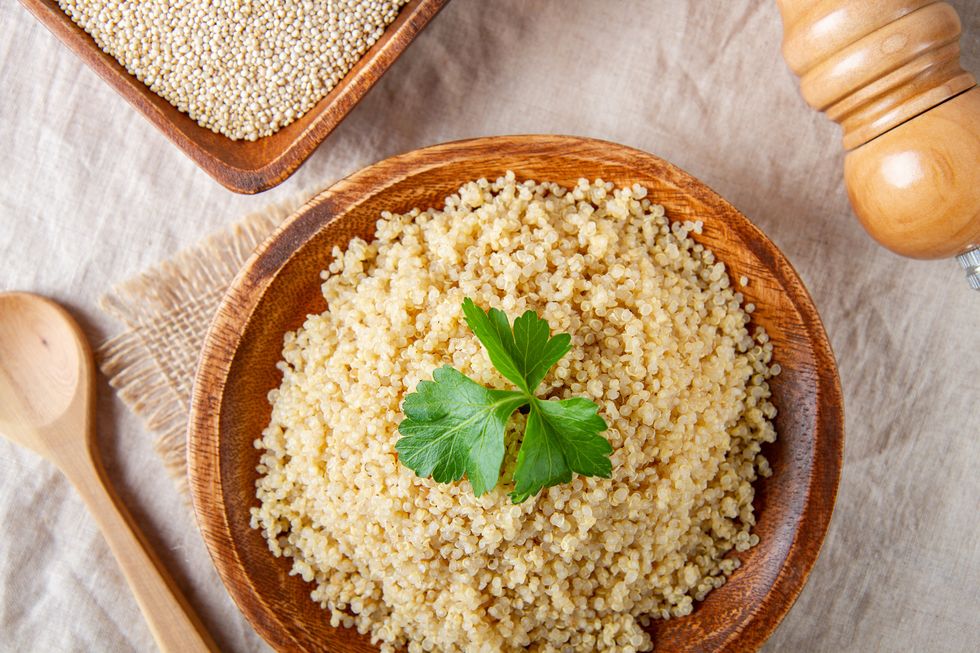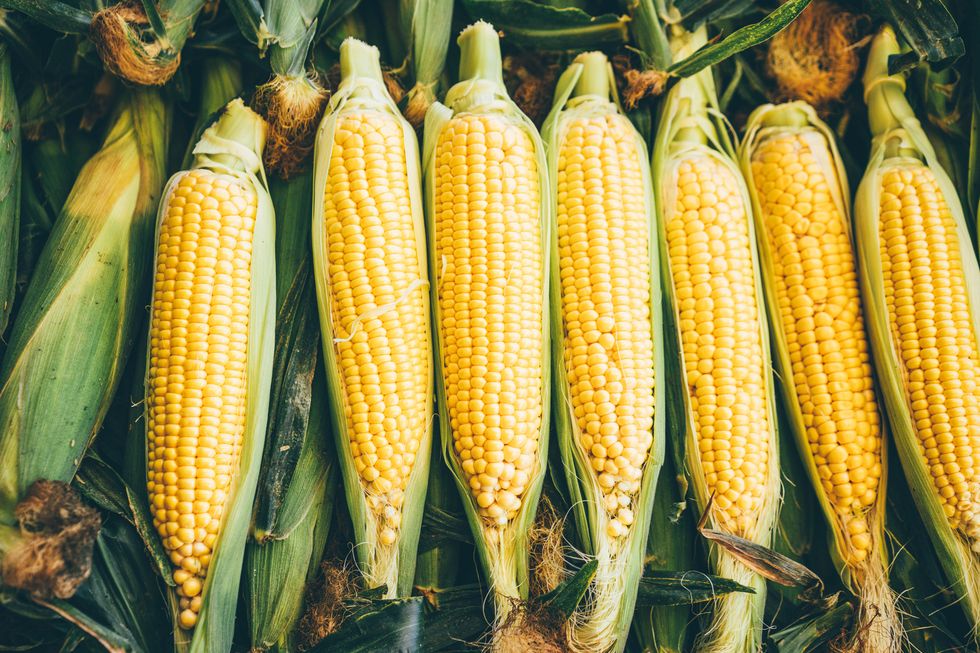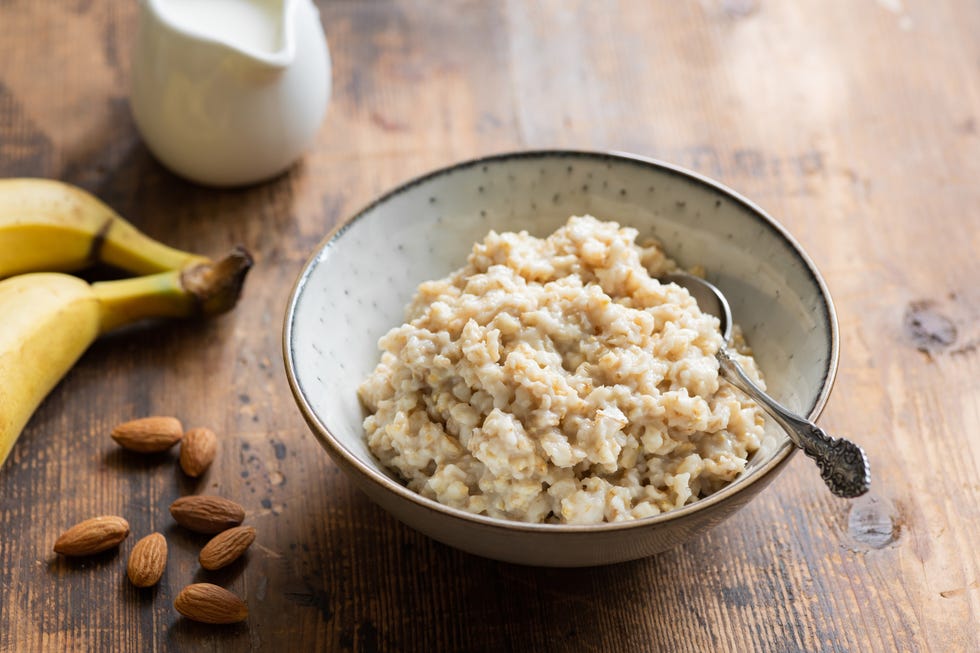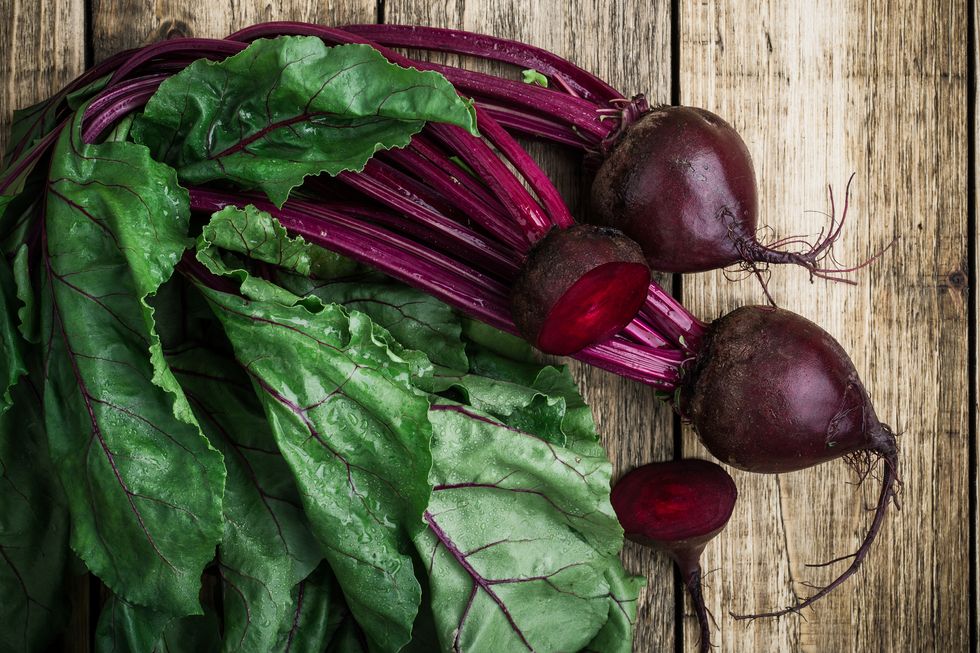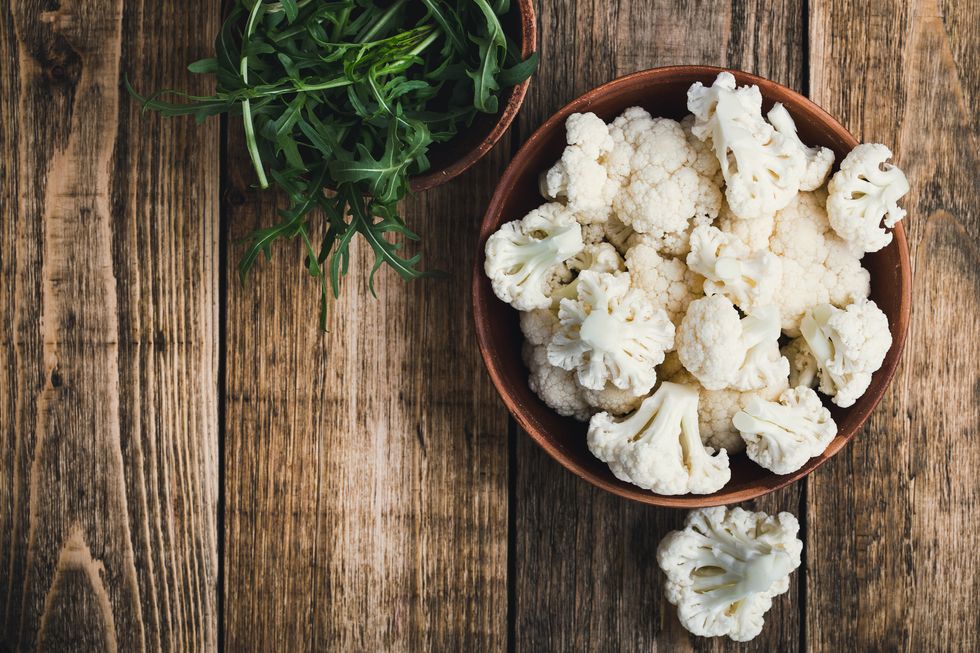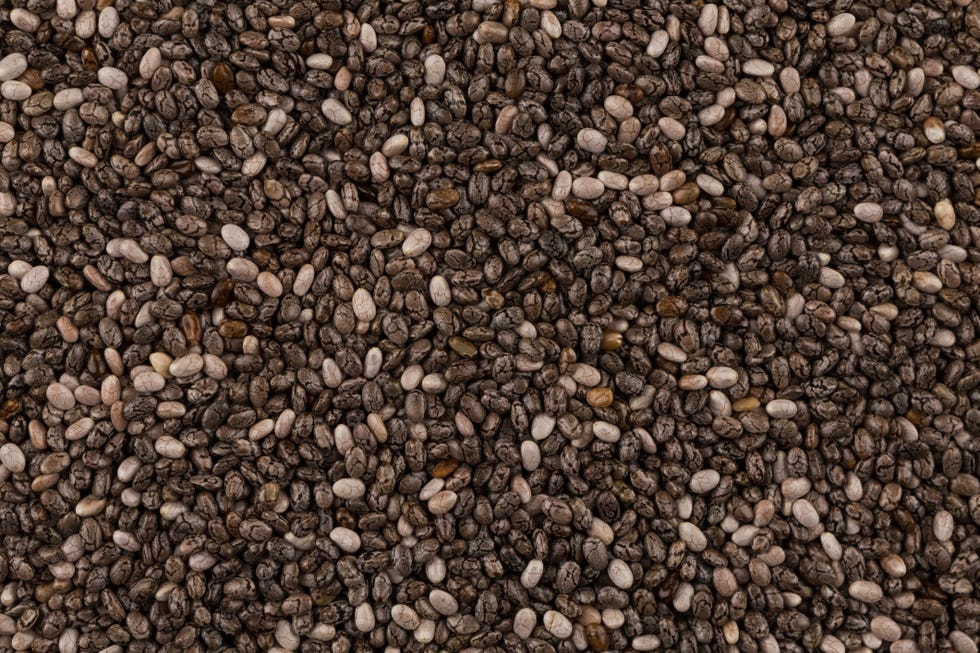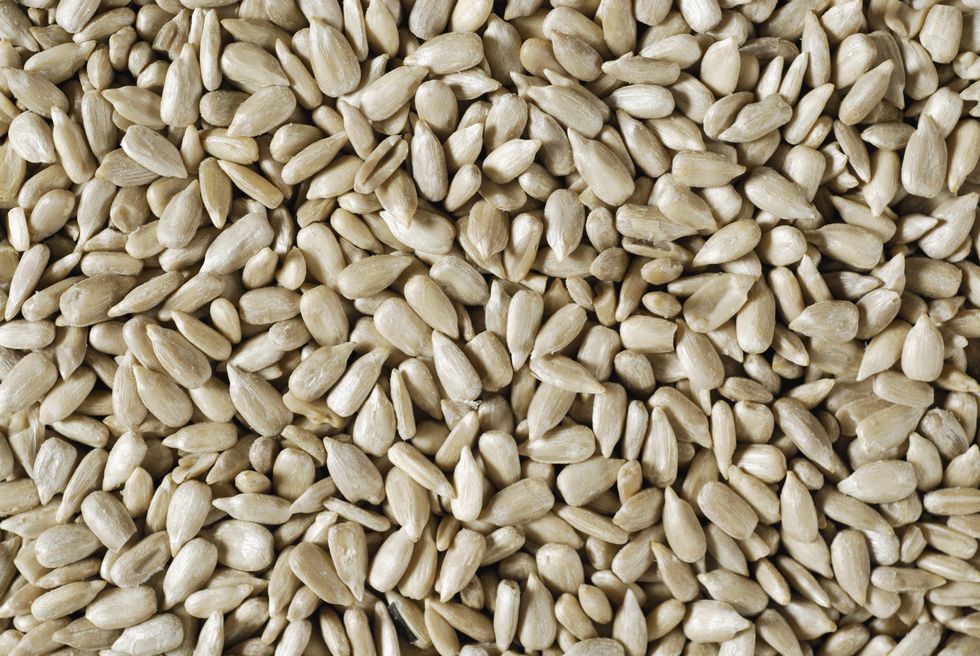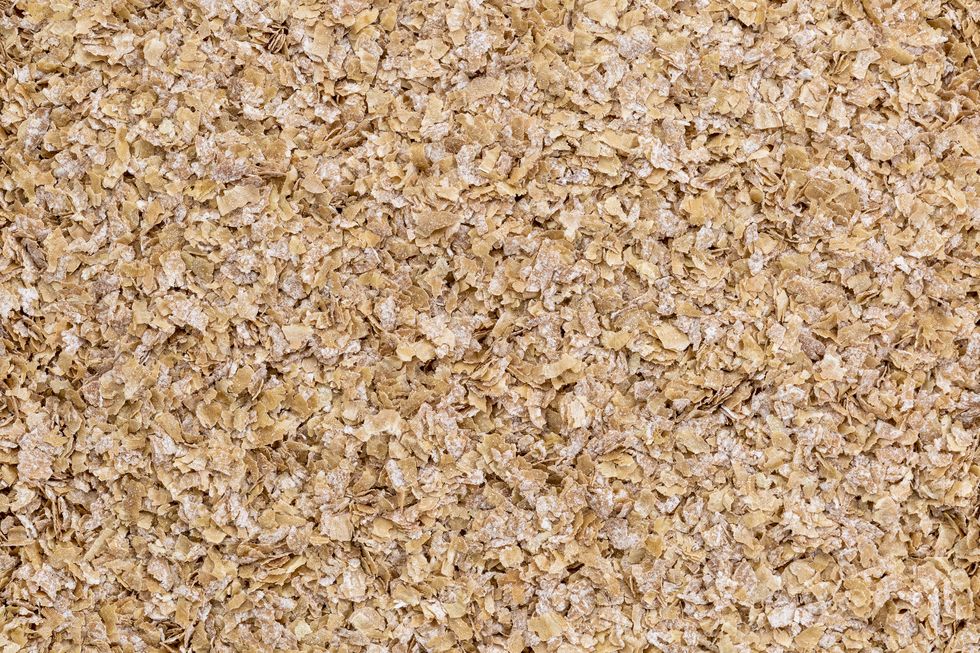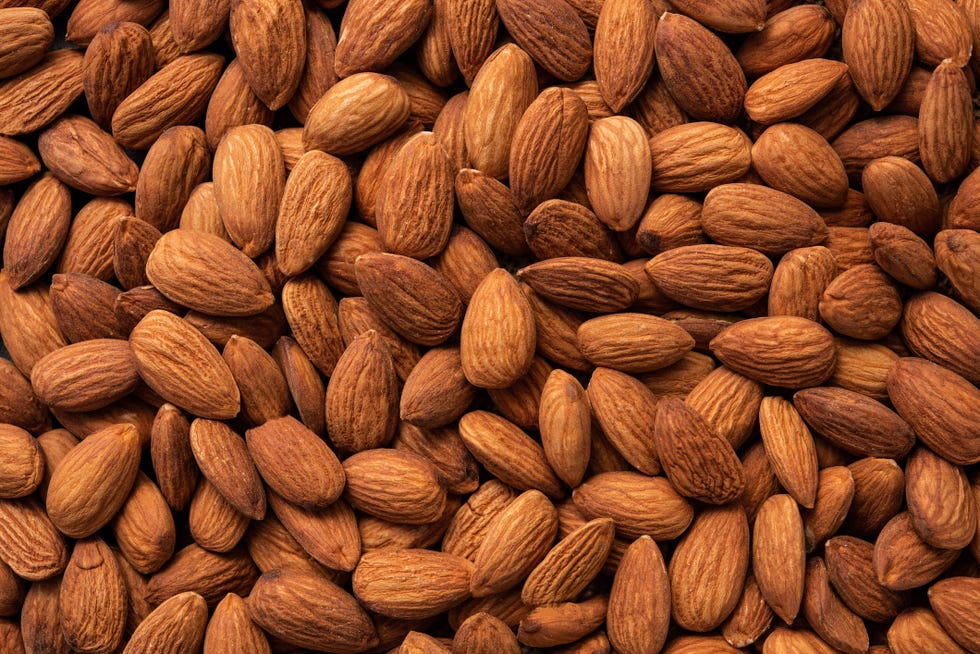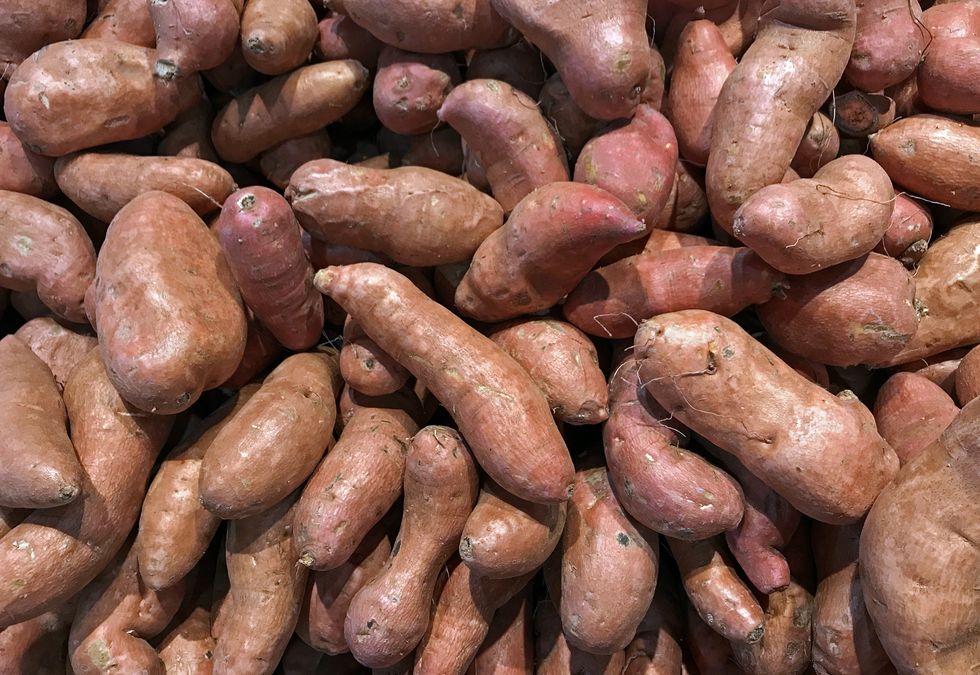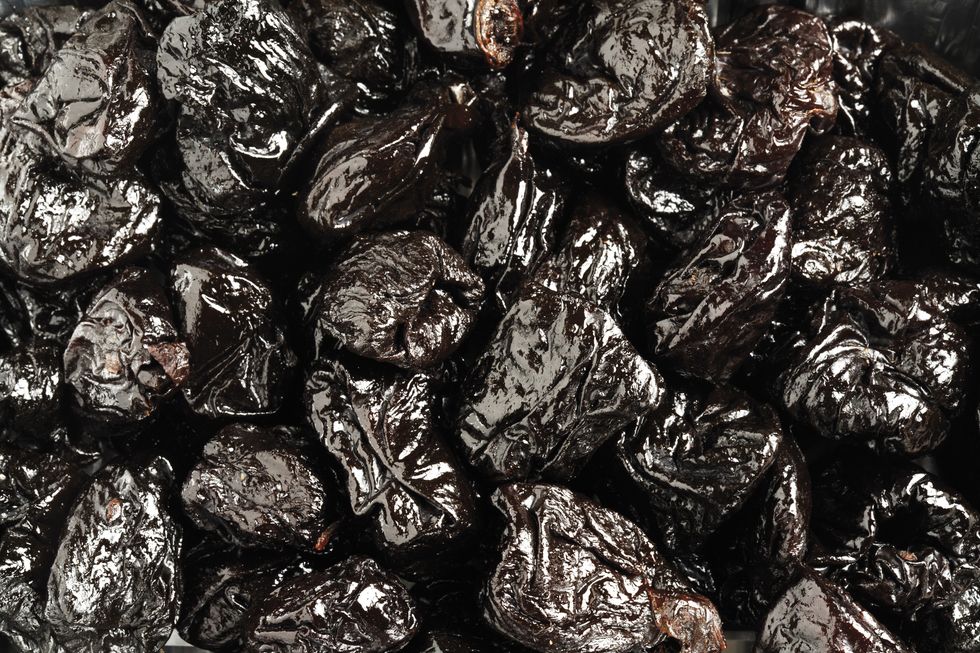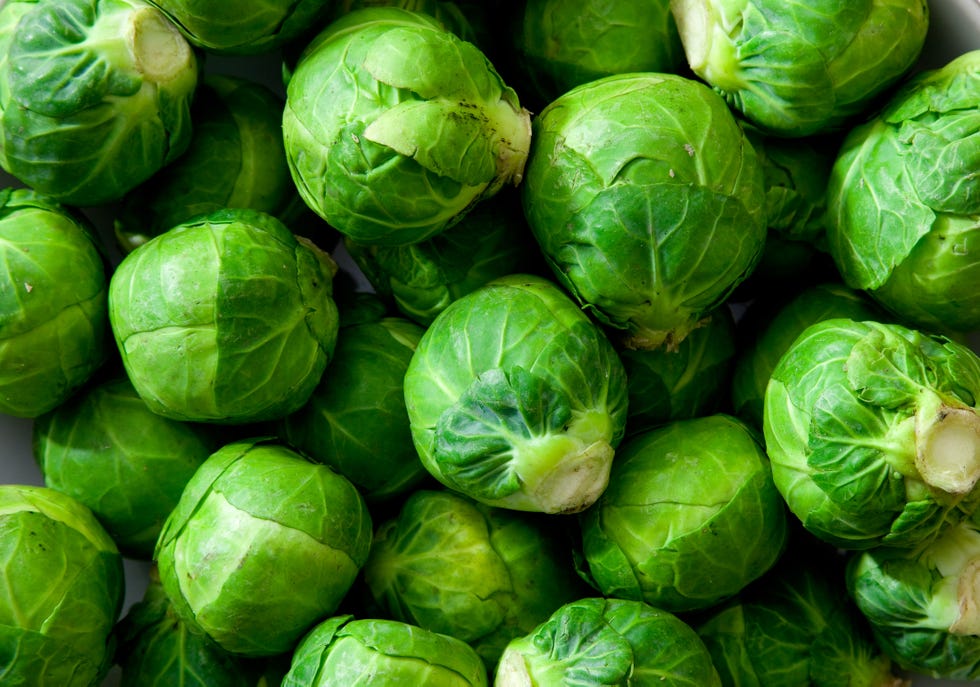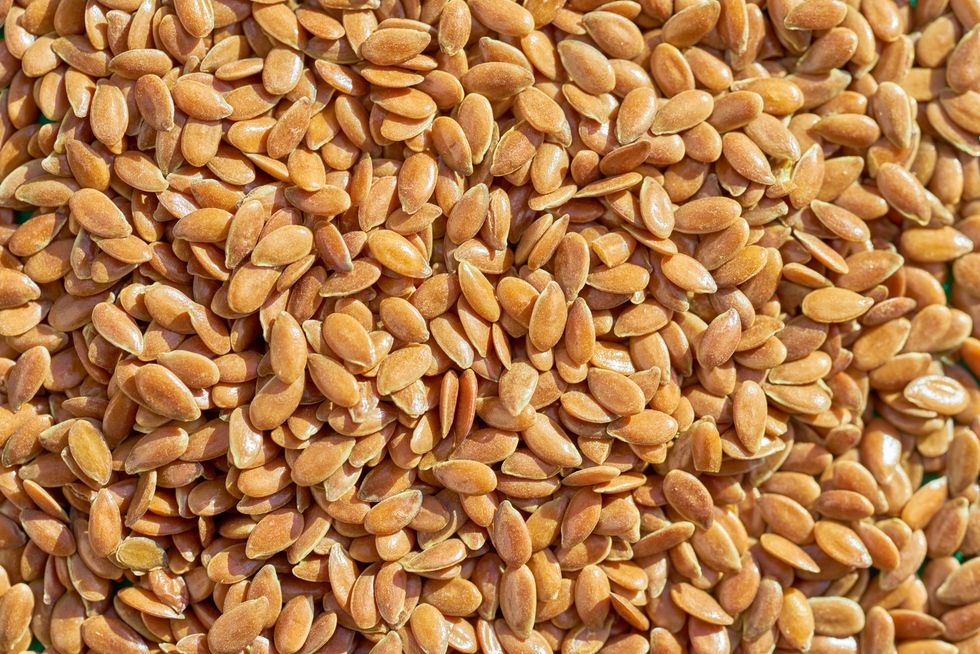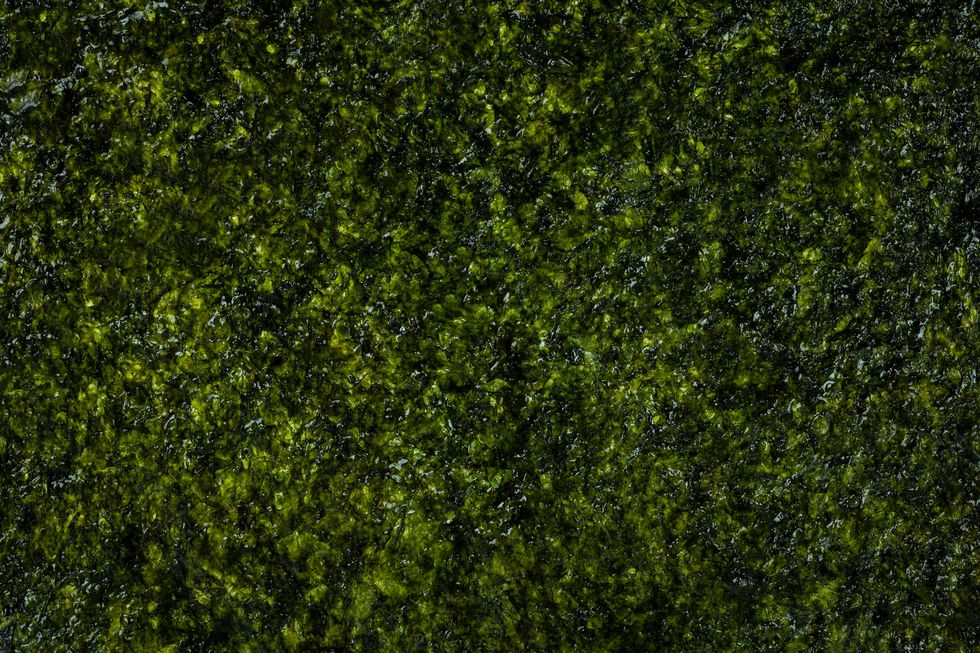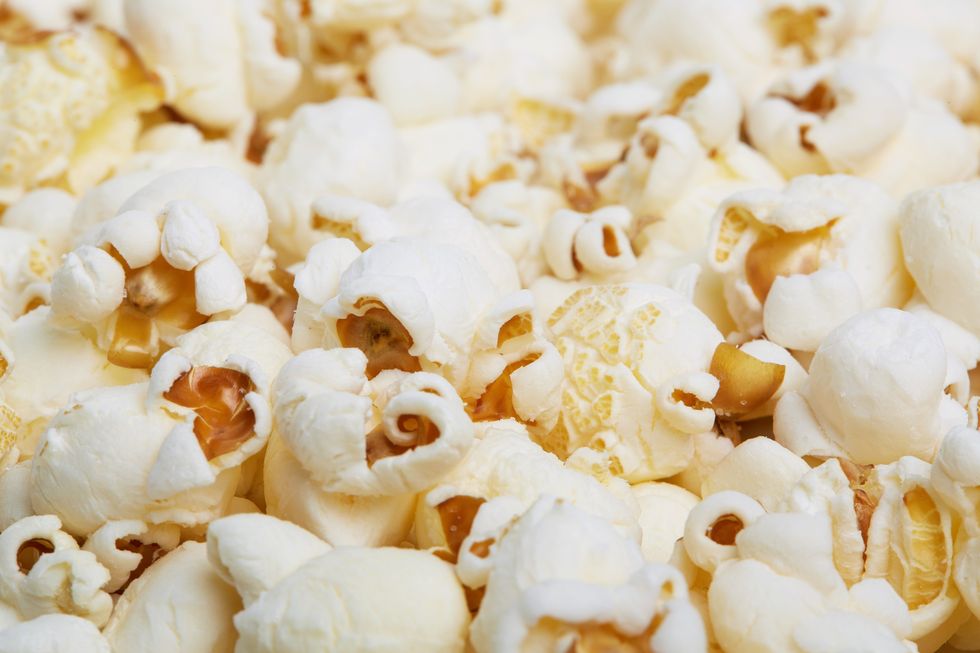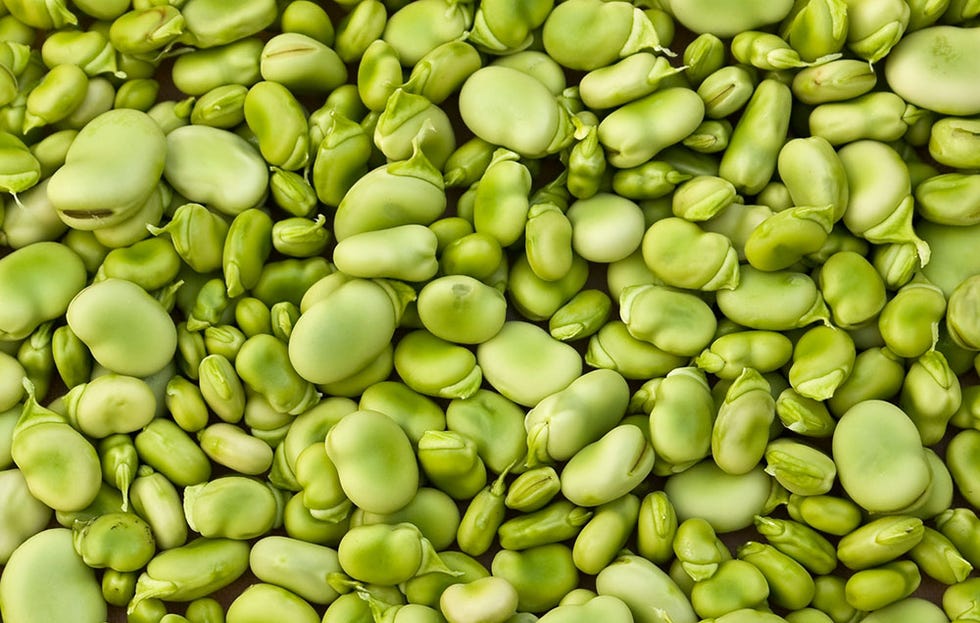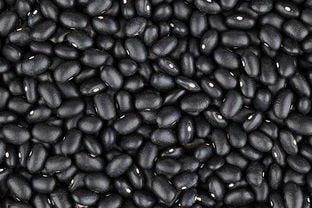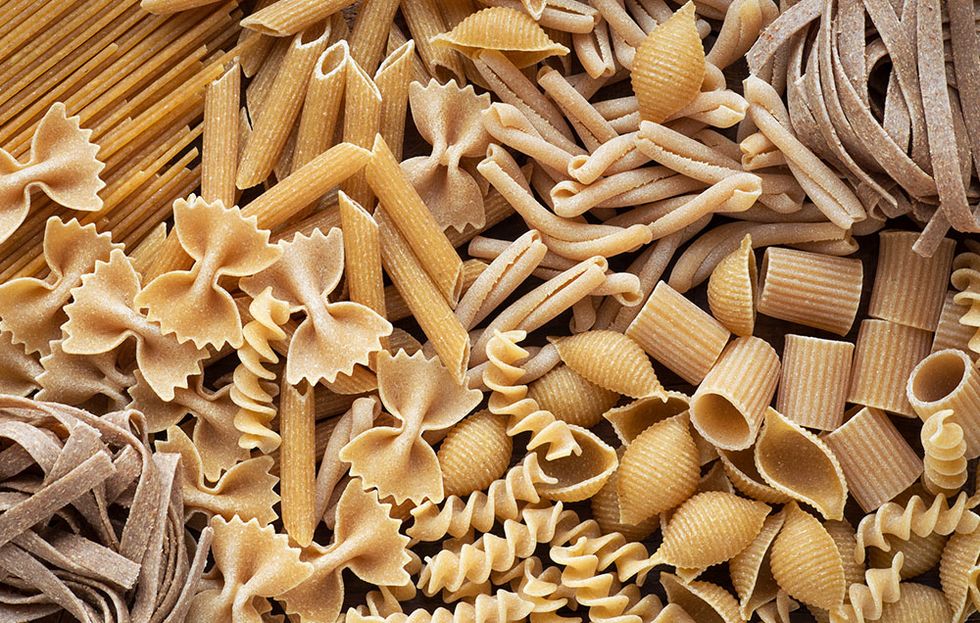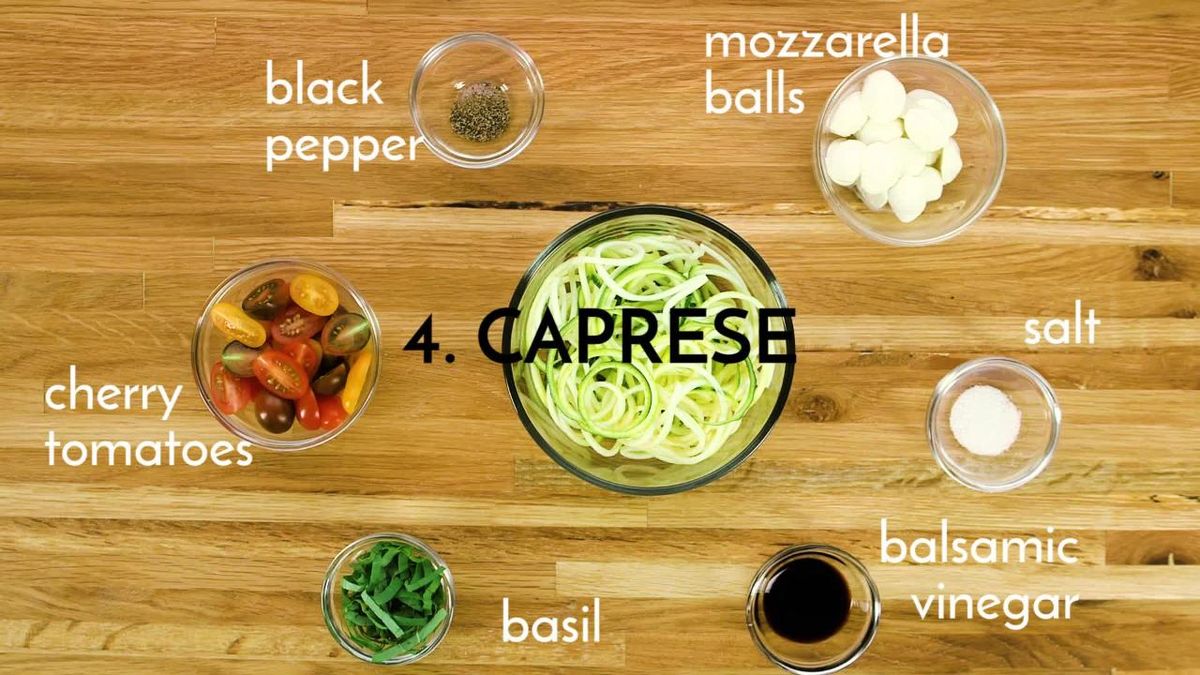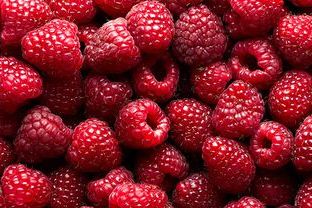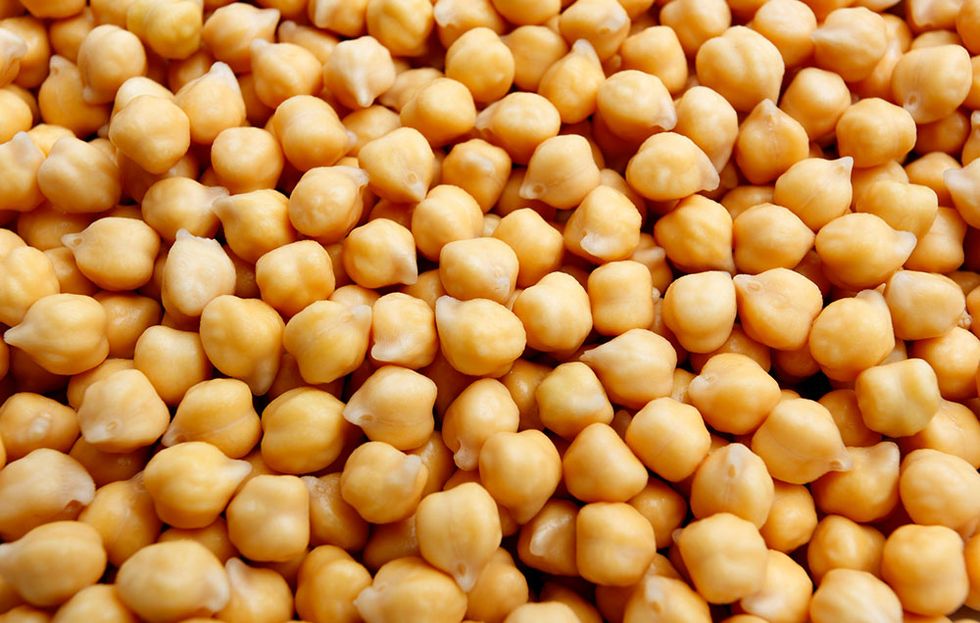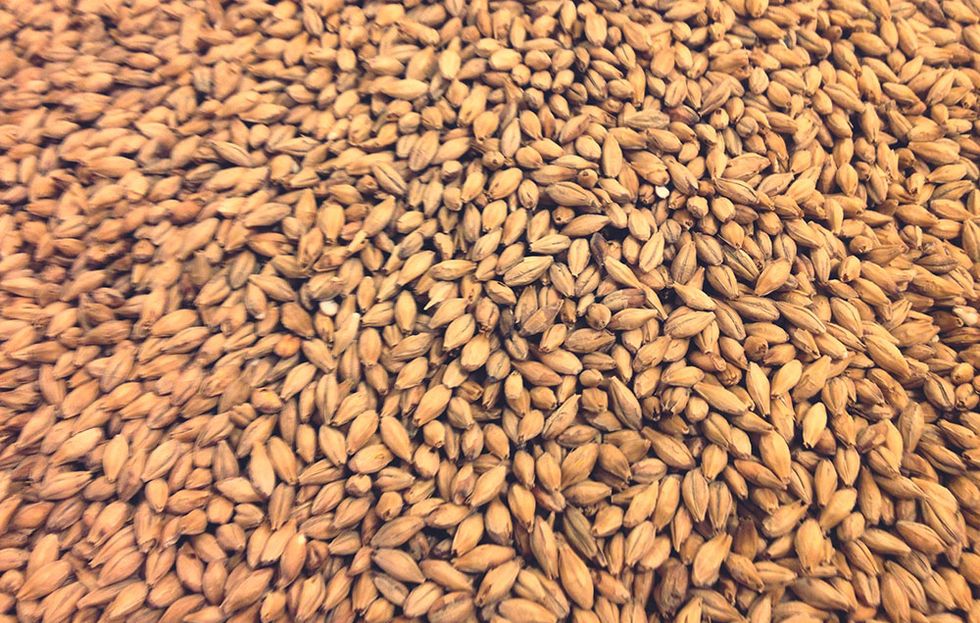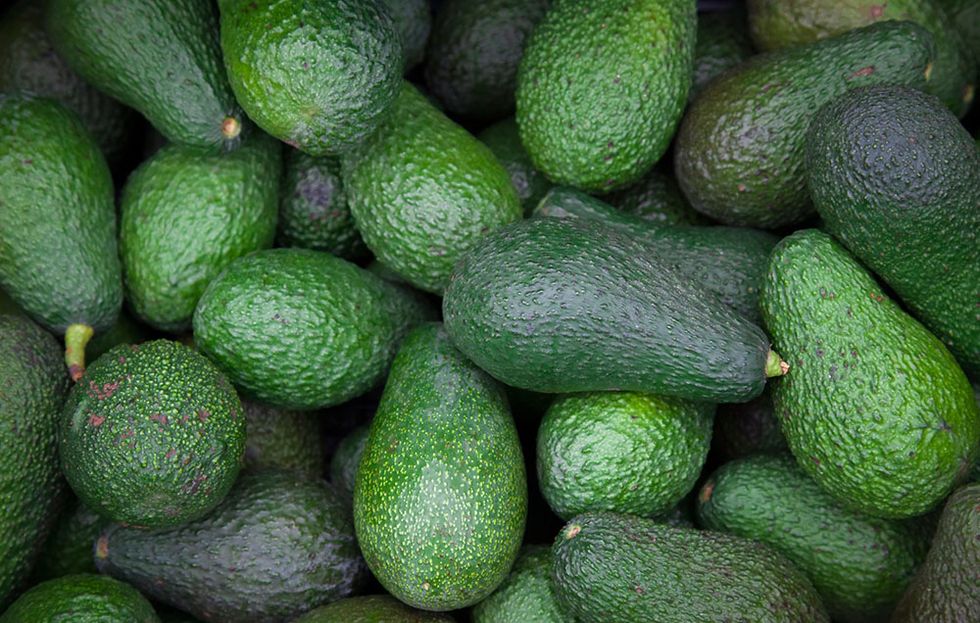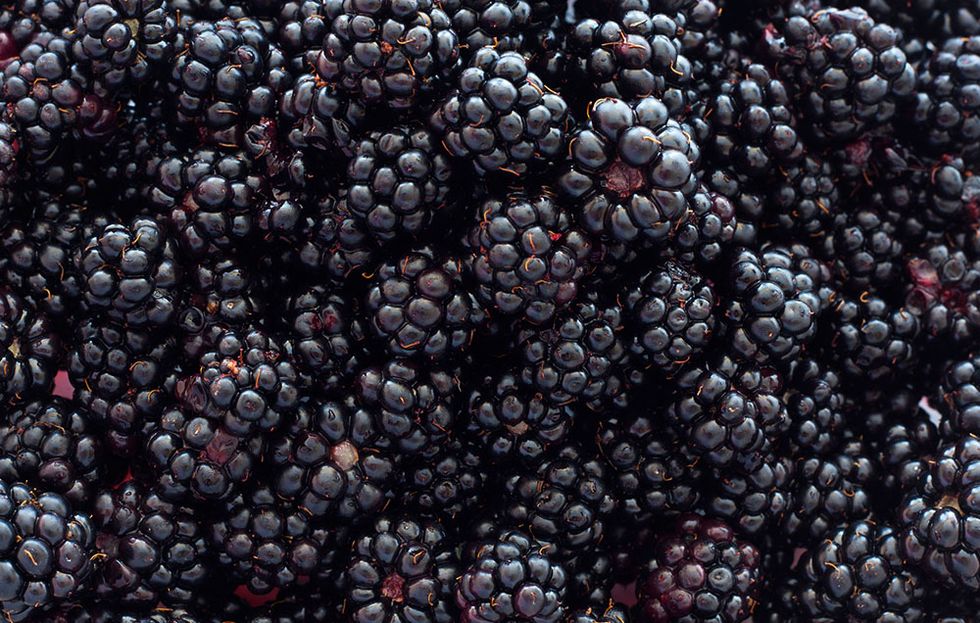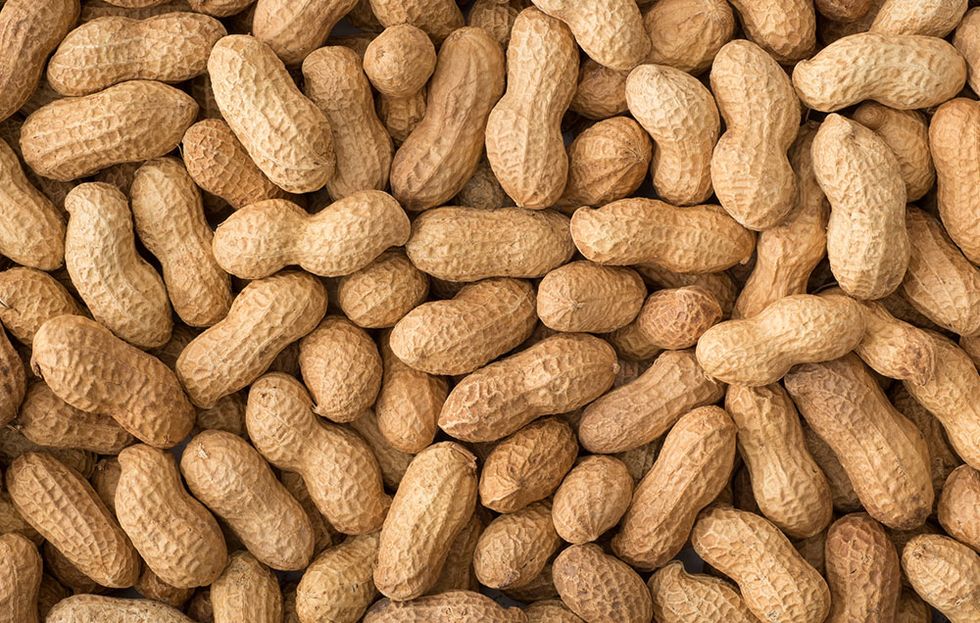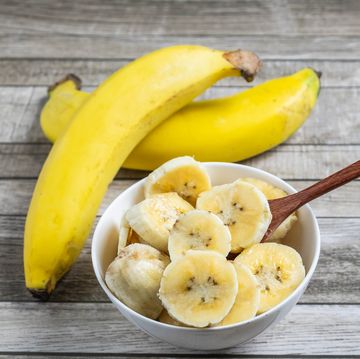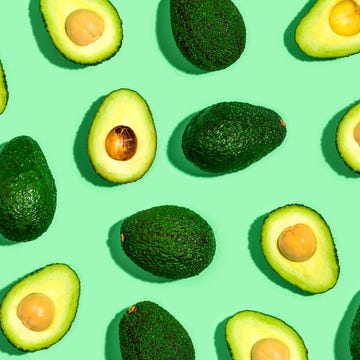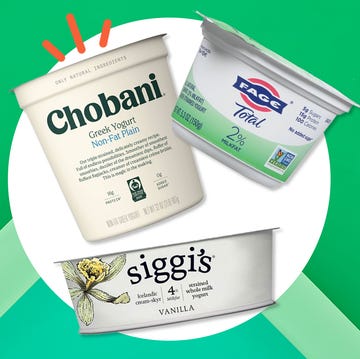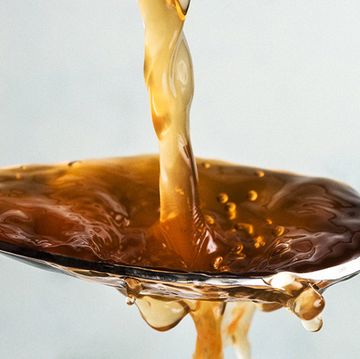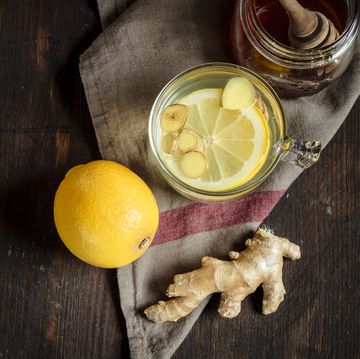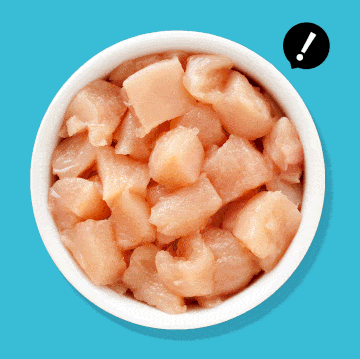Fiber is a requirement for your body to function properly. And it deserves to get as much attention as other micronutrients (looking at you, protein) because it's truly an essential part of a healthy diet—not to mention, it's also great for keeping you regular (IYKYK) and helping with weight loss.
But fiber comes with tons of other health benefits, too. "Fiber is one of the most important nutrients," says Nancy Farrell Allen, registered dietitian nutritionist (RDN), and spokesperson for the Academy of Nutrition and Dietetics. "It helps protect against certain diseases such as diabetes, heart disease, type 2 diabetes, and some forms of cancer. It also plays a role in weight management and is necessary for elimination and good gastrointestinal health."
While you can pop a fiber supplement, there are tons of high-fiber foods you can integrate into your diet so you can get your fiber fix without one. Fiber is found in plants—all the more reason to up your fruit and veggie game (and eat more lentils, whole grains and legumes).
That said, most of us aren't getting enough fiber. "Research suggests that on average Americans get only 10 to 15 grams of fiber per day," says Marisa Moore, RDN, at MarisaMoore.com. "This is well below the recommended USDA-recommended 25 to 38 grams per day." For women, the ideal number is between 23 and 28 grams of fiber per day, depending on your age.
Ready to up your fiber consumption? Great! But, go slow. If you take in a ton of fiber too quickly, you may feel bloated and gassy. "Increase your fiber intake gradually over several weeks to alleviate any bouts of abdominal discomfort," says Farrell Allen. "Be kind and give your body time to adjust, and drink plenty of water to soften the fiber as it moves through the GI tract."
According to the FDA, foods must contain 5 grams of fiber in order to be called "high fiber." "But [nutrient-rich] foods that fall below this threshold are still good to include," says Moore. Remember, variety is key for a healthy, high-fiber diet that also has everything else your body needs to function optimally.
There are two types of fiber: soluble and insoluble. The TL;DR: soluble fiber (found in foods like nuts, seeds, beans, peas, and some fruit and veggies) helps slow down digestion while insoluble fiber (found in whole grains and vegetables) helps food pass through more quickly.
Don't know where to start? Add these high-fiber foods to your carthe next time you go grocery shopping.
Meet the experts: Nancy Farrell Allen, MS, RDN, FAND, is a registered dietitian nutritionist at Farrell Dietician Services. Alex Caspero, RD, is a nutritionist who focuses on helping her clients build a healthy relationship with food. Keri Gans, RD, is a nutritionist with over 20 years of experience. Scott Keatley, RD, has worked as a clinical dietitian at several health institutions. Marisa Moore, RDN, LD, is a registered dietitian nutritionist and culinary and integrative dietician at MarisaMoore.com.
1. Pinto Beans
Fiber: 15 grams per one-cup serving
Pinto beans offer plenty of dietary fiber to help you feel full longer. "They have so much fiber and are a nice protein source, too," says Farrell Allen. Add them to soups and stews, top salads with them, or sub them for meat in tacos or burritos. Bonus points if you pair them with kidney beans (which pack 11 grams of fiber per one-cup serving) and/or navy beans (which have 19 grams) in a hearty chili.
2. Soybeans (Edamame)
Fiber: 11 grams per one-cup serving
Soybeans are high in phytoestrogens that may help to alleviate or reduce menopausal symptoms, such as hot flashes, says Farrell Allen. Sprinkle a few into your next omelet, add some to your stir-fries, or eat them as a snack.
3. Acorn Squash
Fiber: 9 grams per one-cup serving
Acorn squash is available year-round, but is most plentiful in the fall and is delicious when cubed and roasted. It's also an excellent source of vitamin A, which is known for its antioxidant benefits of reducing high blood pressure, heart disease, and some cancers, says Farrell Allen.
4. Guava
Fiber: 9 grams per one-cup serving
This delicious tropical fruit packs 9 grams of fiber, and studies have found that guava lowers blood sugar levels and improves insulin resistance, says Farrell Allen. The next time you see guava nectar at the store, buy some so you can whip up a guava margarita mocktail.
5. Collard Greens
Fiber: 6 grams per one-cup serving
A handful of collard greens are perfect stewed in the traditional southern style or added to a comforting fall or winter soup, says Moore. Want to try these hearty, healthy greens tonight? Look no further than the WH Test Kitchen's vegan green curry recipe.
6. Strawberries
Fiber: 3 grams per one-cup serving
Strawberries aren't just for smoothies. Top a spinach salad with them, mix them into yogurt or cereal, or eat them plain as a sweet and filling afternoon snack.
7. Whole-Grain Spelt
Fiber: 7.5 grams per one-cup serving
Spelt has a deliciously nutty flavor and chewy texture, which makes it a great substitute for other grains. It contains 10 grams of protein, too, says Farrell Allen.
8. Pomegranate Arils
Fiber: 7 grams per one-cup serving
The fresh, juicy arils (or seeds) of a pomegranate contain anti-inflammatory properties that may improve skin quality for anti-aging benefits, says Farrell Allen. Plus, they add a fun pop of flavor to yogurt bowls, salads and drinks.
9. Broccoli
Fiber: 2.5 grams per one-cup serving
This popular high-protein vegetable is easy to add to stews, top a baked potato with, or whip up as a simple side dish. Pro tip: It's just as nutritious when you use frozen versus fresh.
10. Carrots
Fiber: 5 grams per one-cup serving
Sure, they're great for portable snacking, but try them roasted and mashed as a side dish for a whole new level of deliciousness. They contain vitamin A to support eye health, as well as vitamin K and calcium, says Farrell Allen.
11. Quinoa
Fiber: 5 grams per one-cup serving
Quinoa is a great way to enjoy fiber in a nutty, chewy flavor profile. Cook it as a side dish or cold salad, use it as a filler for tacos or enchiladas, or try this protein-packed smoky chicken quinoa soup recipe.
12. Corn
Fiber: 4 grams per one-cup serving
Enjoy corn on the cob, or add kernels to salads, minestrone soup, salsa, dips, or side dishes. It's equally nutritious fresh or frozen.
13. Oatmeal
Fiber: 4 grams per one-cup serving (cooked)
Start your morning off right with a hot bowl of oatmeal. Bonus points if you top your oatmeal with other fiber-rich foods, such as strawberries, raspberries, or blackberries.
14. Beets
Fiber: 3.5 grams per one-cup serving
These under-appreciated root veggies become incredibly sweet when drizzled with olive oil, roasted until tender, then skinned (use a paper towel because it's messy). They're an amazing side dish or delish as a topping for green salads with a crumble of goat cheese.
15. Bananas
Fiber: 3 grams per medium banana
Who knew bananas contain fiber? While it's not a ton, they're a great and easy way to add to your daily total intake.
16. Cauliflower
Fiber: 5 grams per one small head
Cauliflower is a great snack, but it's also wonderful roasted along with garlic and chickpeas, then tossed over pasta. Or roast and mash it for an alternative to potatoes.
17. Chia Seeds
Fiber: 10 grams per 1-ounce serving
Chia seeds add a nice nutty flavor to smoothies, yogurt, and other foods—and they’re super easy to use. Just sprinkle them over or into your dish, and you’re good to go. In addition to an impressive fiber count (and high protein content), "they're a good source of omega-3 fatty acids, which have been associated with a decrease in heart disease," says Keri Gans, RD, author of The Small Change Diet.
18. Sunflower Seeds
Fiber: 12 grams per one-cup serving
Like chia seeds, sunflower seeds are an easy way to inject a little more fiber into your day. These fiber-filled little seeds are also “a good source of monounsaturated fats that may help decrease cholesterol levels,” Gans says. Toss 'em into a salad for a little crunch, add some to protein-packed cookie dough, or just nosh on them on their own.
19. Bran
Fiber: 14.5 grams per one-cup serving
Bran is surprisingly versatile—you can add it to smoothies, oatmeal, muffins, and even mashed bananas with nut butter, says Sonya Angelone, RD, a spokeswoman for the Academy of Nutrition and Dietetics. There are also different types to choose from. “Wheat bran is a great source of insoluble fiber, which helps prevent constipation,” Angelone says. “I really like oat bran as a concentrated source of soluble fiber.” (Soluble fiber slows digestion and keeps your blood sugar stable.)
20. Almonds
Fiber: 6 grams per 1/2-cup serving
High-fiber almonds can do your gut and your skin a solid. They’re a “good source of vitamin E, which has been associated with a reduction in UV damage of the skin,” Gans says. She recommends using finely-chopped almonds to coat meat before baking or over salads—try the WH Test Kitchen's Almond-Crusted Striped Bass recipe—or just munching on them whole.
21. Sweet Potatoes
Fiber: 4 grams per one-cup serving
Sweet potatoes are an awesome way to up your fiber intake, plus they’re also an “excellent” source of vitamin A, which is great for your vision, Gans says. You can swap sweet potatoes into just about any potato dish, "bake" up a bunch in your Instant Pot, or try this cool hack from Gans: Slice sweet potato into quarter-inch thick pieces and put them into the toaster. Then, slather your slices with your favorite toast toppings, like peanut butter, banana, and honey.
22. Prunes
Fiber: 12 grams per one-cup serving
Prunes have a solid rep for getting things moving in your gut, and part of their power is due to fiber. They’re also a good source of potassium, which helps your body regulate your blood pressure, Gans says. She recommends throwing a few into oatmeal, or blending them into smoothies.
23. Split Peas
Fiber: 21.5 grams per 1/2-cup serving (uncooked)
Don’t be intimidated by split peas. “They cook up in 30 minutes and don’t need to soak first,” Angelone says. “They also make a great one-pot meal when you add some vegetables at the start of cooking and then fresh spinach at the end.” Split peas are also a great source of iron, which is needed to transport oxygen in your blood, Gans points out.
24. Brussels Sprouts
Fiber: 3 grams per one-cup serving
Brussels sprouts are a great option when you're tired of broccoli or cauliflower, but still want cruciferous vegetable benefits. They’re “rich in vitamin K, which is needed to help your blood to clot,” Gans says. Did you know you can eat 'em raw? Simply slice up sprouts in a food processor (or with a knife), then toss with a dressing. Best. Side. Ever.
25. Flax Seeds
Fiber: 11.5 grams per 1/4-cup serving
Like chia seeds, flax seeds are an easy way to inject fiber into oatmeal, smoothies, yogurt, pancakes, or baked goods, Angelone says. Another, non-fiber perk of flax seeds, per Gans: “They are a good source of omega-3 fatty acids which have anti-inflammatory properties that have been associated with a decrease in joint discomfort.”
26. Seaweed
Fiber: 19 grams per one-cup serving
Seaweed (a.k.a. nori) makes a great addition to salads and soups, and can be a go-to snack on its own, says Scott Keatley, RD, of Keatley Medical Nutrition Therapy. (It adds a nice salty flavor to just about anything.) “Snacks like seaweed can help you to feel fuller longer, decrease cholesterol levels, help regulate blood sugar levels, and be great aids in weight loss,” he says. Serve up this savory oatmeal recipe for dinner—complete with a splash of sesame oil and topping of nori strips.
27. Popcorn
Fiber: 17 grams per one-cup serving
Popcorn is a whole grain (and therefore loaded with fiber), but the kind of popcorn you choose matters, Keatley says. Opt for the buttery movie theater version, for example, and you’re adding in some ingredients that kind of undermine the good stuff. But, if you get your popcorn plain and dress it up yourself with garlic powder or cinnamon, it's a benefit-packed snack, explains Gans.
28. Apples
Fiber: 5 grams per medium-sized apple
Apples are a sweet way to get your fiber intake up. Bonus perk: Apples are also a great source of vitamin C, which supports a healthy immune system and helps your body produce wrinkle-busting collagen, Gans says. Snack on them plain or top them with almond butter for more staying power.
29. Artichokes
Fiber: 7 grams per medium-sized artichoke (uncooked)
Artichokes are a great source of fiber—but a pain to prepare. To make life easier, Caspero suggests adding frozen or canned artichokes to salads and frittatas. Or toss into whole-wheat pasta with sautéed sun dried tomatoes, parsley, chicken, and a sprinkle of feta for a fiber-rich Mediterranean meal.
30. Lima Beans
Fiber: 11.5 grams per one-cup serving
Frozen or canned is your best option to get all the fiber in lima beans; pair with corn to make a savory succotash. "Corn gets a bad rap, but it's technically a veggie and it's relatively high-fiber," Caspero says. Or puree lima beans with lemon juice, olive oil, salt, and pepper to make a "hummus" for veggie dip or a spread on sandwiches.
31. Lentils
Fiber: 15.5 grams per one-cup serving (cooked)
You'll get tons of fiber and protein in every cup of this vegetarian staple. Buy a bag for a dollar at the grocery store and forget the soaking; just drop in simmering water and they're ready in 30 minutes. Caspero recommends using lentils as a filling for tacos or burritos, or making a "lentil loaf" (like meatloaf...but with lentils).
32. Black Beans
Fiber: 16.5 grams per one-cup serving
Caspero suggests lightly mashing black beans and adding to sandwiches, pairing with sweet potatoes and a sprinkling of cheese, adding to soups and salads, or wrapping in a whole-wheat tortilla with turkey and hummus.
33. Whole-Wheat Pasta
Fiber: 4.5 grams per one cup penne (cooked)
Pasta is a surprisingly high-fiber food, if you do it right. Take your whole-wheat pasta and toss with about two cups of cooked mixed veggies, plus tomato sauce or olive oil and lemon, and you'll have a fiber-rich meal with satiating carbohydrates.
Want even more fiber? Try one of these seven takes on zoodles.
34. Raspberries
Fiber: 8 grams per one-cup serving
The season for raspberries—June to August—is fairly short, and they're pricey otherwise. However, you can enjoy these fiber-rich berries out-of-season if you buy them frozen to add to smoothies or fiber-rich oatmeal.
35. Chickpeas
Fiber: 24.5 grams per one-cup serving
"I call chickpeas my chicken," says Caspero, who swaps the high-fiber, vegetarian protein in anywhere she'd otherwise use chicken (hello chickpea salad sandwich!). Because they're pretty bland, they marry well in lots of different dishes. Toss them in a blender with mayo, celery, and carrots to make a take on chicken salad that's high in fiber and protein.
36. Barley
Fiber: 6 grams per one-cup serving (cooked)
You might associate barley with soups, but it works just as well in any dish that calls for white or brown rice. Buy a package of 10-minute barley at Trader Joe's and make one big batch that you can keep in the fridge all week. Then, mix it with roasted veggies (like onions, broccoli, and red peppers), a serving of chicken, and some dressing for a hearty lunch or dinner.
37. Pears
Fiber: 5.5 grams fiber per medium-sized pear
Apples aren't the only high-fiber fruit in the game! Pears, another fall favorite, pack plenty—and there are so many fun ways to feature this fruit (think: drinking vinegars and mocktails or a healthy baked oatmeal). P.S. It pairs perfectly with nuts and cheeses, so it's the ultimate addition to a charcuterie board.
38. Avocados
Fiber: 9 grams per medium-sized avocado
Did you even need another reason to love the guac all-star? Slather avocado on toast, toss into your favorite salad, blend into a smoothie, or just slice it to add to your sandwich for a solid boost of fiber (and healthy fats to help stabilize glucose levels).
39. Blackberries
Fiber: 7.5 grams per one-cup serving
Like raspberries, blackberries are high in fiber. Whether fresh or frozen, you can eat these babies in yogurt, as part of a fruit salad, or raw by the handful.
42. Peanuts
Fiber: 14 grams per one-cup serving
For such a seemingly ordinary food, peanuts contain a surprisingly high amount of fiber. And, yes, that goes for peanut butter, too. Toss whole or halved peanuts into stir fries or salads, or just go ahead and eat some PB straight out of the jar.
